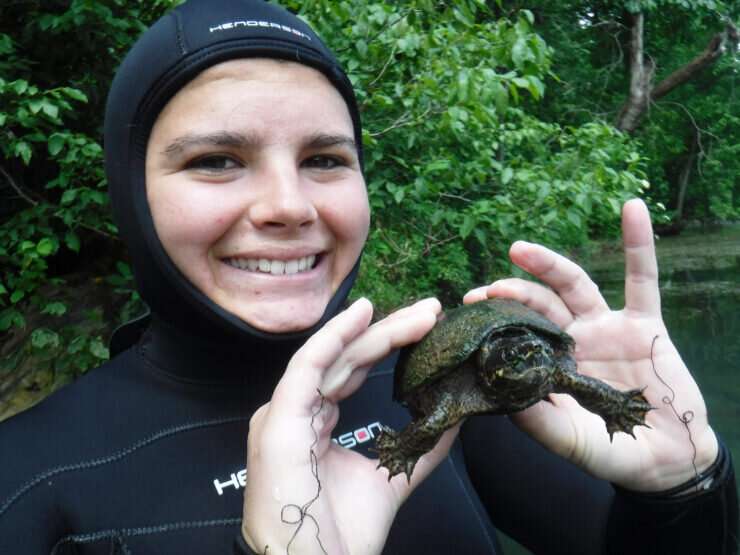Along the Missouri river banks, one turtle thrived while the other declined

Two activities—harvesting turtles for food and riverside development—in Southern Missouri sharply reduced the number of northern map turtles in one river. When that happened, a longtime competitor moved in, according to 50 years of data.
A new study by researchers at Trinity College in Connecticut, documents how a native competitor, the red-eared slider, thrived following a 50 percent decline of northern map turtles that occurred because of poaching and rapid changes in their habitat in the Ozarks.
The paper offers a new look at the existence of two different species of river turtles and the manmade factors that tipped the scales in favor of one.
The findings were published in the October 2022 edition of Amphibia-Reptilia, but the river is unnamed because turtles are considered a delicacy in some areas of the world.
Between 1969 and 1980, poaching cut the population of northern map turtles in half, researchers found. Map turtles had long thrived in the river community before being harvested for food, according to Pitt. The illegal activity is a significant issue in both the U.S. and Canada.
Compounding that loss, after 1980, the habitat also became less suitable for the northern map turtles with deforestation, algae blooms, silt and sediment accumulation and pollution.
Yet the environmental changes did not negatively impact the red-eared slider turtles, who had moved into the study area and occupied the river alongside the northern map turtles, maintaining the same population level for decades.
The red-eared sliders, a generalist species, were more adaptable and fared better in the degraded environment, allowing them to thrive.
Although native to the central United States, red-eared sliders have become established in other places because of pet releases and are considered invasive in many areas where it outcompetes native species.
"This is one of few studies to demonstrate the pathway by which ecological communities become overtaken by generalist species as we degrade the environment," said Amber Pitt, associate professor of environmental science and biology at Trinity, and study author.
"The turtles can serve as sentinels for environmental health," said Pitt. "If we're seeing a decline in the more sensitive species and an increase in the generalist species it's bad news for people, too. The water quality is diminishing."
Eleanor Tate of Carlisle, Penn., the lead author on the paper and a former student of Pitt's noted that long-term studies such as this one may improve our ability to predict when future turtle population changes may occur.
More information: Amber L. Pitt et al, Factors contributing to the range expansion and population increase of a native generalist species, Amphibia-Reptilia (2022). DOI: 10.1163/15685381-00002883
Provided by Trinity College




















